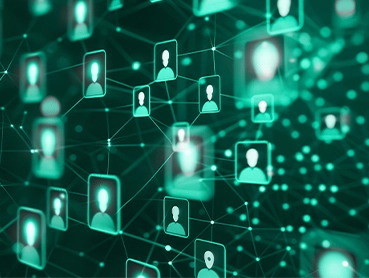Eliminating Bias in Hiring With AI Recruiting Tools

At a time when virtually every industry out there is struggling to meet the unprecedented workforce challenges in today’s global marketplace, diversity in the workplace has never been more important. With good reason. Because research shows that businesses who make diversity a priority outperform their competition and reap a variety of tangible benefits. We’ll explore those benefits later but the real challenge when it comes to building a diverse workforce lies in eliminating conscious or unconscious bias during the recruiting and hiring process.
Many organizations are turning to AI recruiting tools like Arya to help them meet their DEI hiring goals and to eliminate hiring bias. Still, it’s important to gain a full understanding of how hiring bias can impact a company in a myriad of ways and to develop a multifaceted strategy for eliminating bias in recruitment to promote a more diverse workforce. Before we talk strategy, let’s explore the different types of bias you should be aware of.
Understanding the Various Types of Bias
Just like people, bias comes in all shapes and sizes. Bias in hiring isn’t always just about a negative perceptions affecting decision making. It can also be a bias based on a positive perception. The point is that bias in hiring is allowing anything other than a candidate’s qualifications, skills, experience and other relevant data specific to the role, to form a conclusion upon which your hiring decision is based.
- Affinity Bias: Favoring candidates who share similar characteristics, backgrounds, or interests as the hiring manager.
- Confirmation Bias: Seeking out information that confirms pre-existing beliefs or ideas about a candidate.
- Halo Effect: Perceiving a candidate in a positive light due to one impressive accomplishment.
- Horns Effect: The opposite of the halo effect, perceiving a candidate negatively due to one unfavorable trait.
The Impacts of Hiring Bias in the Workplace
Hiring bias in the workplace doesn’t just affect the individual it may be directed at. There can be a domino effect that reverberates through the entire organization when bias is occurring. And not a good one.
Reduced diversity: Yes, this may seem obvious but it bears emphasizing. Particularly when organizations are struggling to fill important roles in industries like healthcare where the workforce should reflect the communities served for the best outcomes. When hiring decisions are made based on biases, whether they are conscious or unconscious, certain groups may be underrepresented. This also means fewer perspectives, backgrounds, and experiences, which can substantially limit team creativity and problem-solving.
Limited pool of talent: Biased hiring can prevent organizations from accessing the full talent pool available. If hiring managers unconsciously favour certain groups over others, they may overlook highly qualified candidates.
Lower employee morale: When employees perceive there is bias in hiring decisions, it can lead to decreased morale and job satisfaction. Employees may feel that they’re not valued or that they have been unfairly treated.
Employer brand takes a hit: In today’s age of information, word gets around – and quickly. Accusations of hiring bias can damage an organization’s reputation. This can affect your ability to attract top talent and can also impact customer perceptions.
Legal repercussions: Biased hiring can lead to lawsuits, penalties, and other legal actions if a company is found to have biased hiring practices.
Decreased productivity: Diverse teams have been shown to be more productive, innovative, and creative. In fact, research shows that inclusive teams are 35% more productive.
Higher turnover rates: Employees who feel they have been the victim of biased hiring or who work in an environment where bias is prevalent may be more likely to leave the organization. (PS – the average cost of employee turnover can be as much as 33% of an employee’s salary.)
Reduced financial performance: A LinkedIn study found that organizations with higher rates of ethnic diversity are 36% more likely to outperform financially, and that diverse companies generate 2.5X higher revenue per employee. By not tapping into the full spectrum of available talent, organizations may be limiting their financial success. Read more about how removing bias and fostering a more diverse workforce can drive up profitability in our – Blueprint to drive DEI Hiring in the Workplace here.
Strategies for Identifying and Mitigating Bias in Hiring
Valeria Stokes, Chief Human Resources Officer and Staff Diversity Officer for the American Bar Association highlights a critical challenge when it comes to solving hiring bias –
“The problem is that many businesses and managers will say, ‘We don’t even need to talk about diversity because we’re only interested in hiring the best talent,’ and then they’re ignoring unconscious bias. What they assume is that there’s a level playing field for women, for people of color, for economically and socially oppressed groups — and that means those groups aren’t going to be given a fair shake.”
But a fair shake starts with organizations learning to identify the signs of bias in their hiring processes. Here are some tips for doing exactly that.
Awareness training: Raise awareness in your organization by conducting regular training sessions for recruiters, hiring managers, and other stakeholders to root out and eliminate potential biases.
Regularly review job descriptions: Job descriptions should always be written in an inclusive, yet neutral tone that doesn’t favor any particular gender or group. Avoid language that is decidedly “masculine” or “feminine” in tone that may alienate one gender or the other.
Seek feedback: Nothing better than getting it straight from the horse’s mouth. After interviews, get feedback from candidates about their experience to help identify areas where unconscious bias may have influenced the process.
Data analysis: Regularly analyze hiring data to check for patterns. For instance, if a particular group is consistently underrepresented in the interview or hiring stages, it may indicate bias.
Create a structured interview process: Make sure the questions for every candidate interviewing for the same role are the same to ensure all candidates are evaluated based on the same criteria.
Create diverse interview panels: Ensure your interview panel is diverse to enable multiple perspectives and reduce individual bias. And train interviewers to avoid asking questions that could lead to biased answers or that focus on non-job-related criteria.
Leverage technology: Implement AI-powered recruitment tools such as Arya, that have built-in diversity features, as well as candidate masking capability. The right AI tool can actually do far more for your recruitment process in the long run. But let’s dive a little deeper into how AI recruiting tools can be leveraged to combat hiring bias.
How AI Recruiting Tools Help Combat Hiring Bias
Candidate masking: Remove names, photos, and other personally identifiable information from resumes and applications. This helps prevent biases related to gender, ethnicity, or age, ensuring that initial screenings are based on skills and experience rather than personal details that might introduce bias. The Arya sourcing platform has built-in diversity indicators and candidate masking capability that eliminates bias and allows recruiters to build a more diverse talent pool.
Standardizes resume screening: An AI tool like Arya can rapidly and accurately screen resumes based on a consistent set of criteria, ensuring that every candidate is assessed on the same parameters without human biases.
Analyzing job descriptions: AI tools can analyze job descriptions and highlight potentially biased language or phrases that might discourage certain groups from applying. By promoting inclusive language, organizations can attract a more diverse range of candidates.
Skill-based assessments: Recruiters and hiring managers can utilize AI tools to design and evaluate tests or simulations that measure a candidate’s ability to perform specific tasks related to the job, ensuring that evaluations are based on actual job-relevant competencies.
Data-driven insights: AI can analyze hiring data to identify patterns or trends that might indicate unconscious biases in the recruitment process. For instance, if a particular demographic is consistently underrepresented at certain hiring stages, AI can flag it for review. Even better, platforms like Arya with AI-powered talent intelligence can also deliver critical insights around key data points such as location potential, skill set distribution, salary projection, company mapping, and education enabling recruiters to establish more effective search parameters.
Interview chatbots: Chatbots powered by AI can conduct initial interviews using a consistent set of questions for every candidate, ensuring uniformity in the process.
Predictive analytics: AI can use predictive analytics to assess the likely success of candidates in specific roles based on objective criteria rather than subjective human biases. For example, the Arya platform uses predictive analytics, 7 multidimensional data points, and 300+ attributes to understand and assess candidate relevancy against a particular role resulting in a much higher rate of candidate to job matches.
Diversity metrics: AI tools can track diversity metrics throughout the recruitment funnel, ensuring organizations are aware of their progress towards diversity and inclusion goals.
Ensuring Your AI Recruiting Tool is Unbiased
However, even though AI recruiting tools can be invaluable resources when it comes to eliminating hiring bias, it’s essential to approach the use of AI in recruitment with caution and more importantly, to select the right AI tool. After all, any AI tool is only as good as the data it was trained on and the level of advanced technology it was created with.
One example of AI gone wild happened when e-commerce giant – Amazon developed an AI-powered recruiting tool to review resumes and make hiring recommendations. However, users discovered that the AI algorithms were favoring male candidates over female candidates.
Developers traced the bias back to the AI training data consisting of resumes submitted to Amazon over a 10-year period, in which the majority of applicants were male. As a result, the algorithm learned to associate certain keywords and phrases more strongly with male candidates, and it penalized resumes that contained language more commonly used by women.
Amazon reportedly abandoned the tool altogether in 2018, but the infamous incident (termed “Amazon AI hiring bias”) highlighted the challenges of developing unbiased AI tools and the importance of careful data selection and testing in AI development.
So, unless algorithms are trained with data representative of candidates from all demographics (and in equal proportions), flaws in the algorithms have the potential to create biases in every step of the hiring process, from talent attraction to screening and beyond.
The best way to ensure your AI remains unbiased is to conduct regular audits to be certain that new biases are not introduced or that existing ones are reinforced. But there’s also the need for that human touch. Contrary to what many people think, there is no substitute for human oversight. AI should be used as a tool to assist human decision-makers rather than replacing them entirely. A balance between AI-driven insights and human judgment is the key to getting it right and optimizing hiring outcomes.
Over to You
People are your most important asset as a company. You can find the right people with the right data and AI-backed tools and techniques. But, with or without them, eliminating hiring bias completely is a tall order. However, choosing the right AI recruitment solution to combat hiring bias is a big step in the right direction.
At Leoforce, we understand the need for data-driven hiring decisions that not only reduce hiring bias, but also provide a solution to every sourcing challenge in a single platform. That’s where Arya comes in. Built on a combination of multiple machine learning models, predictive analytics, neural networks, and natural language processing (NLP), the AI in Arya has been evolving and improving for over 10 years and is unlike any other AI on the market. Distinctly different from typical AI sourcing tools, Arya’s unique configuration and design yields superior results other AI tools are incapable of.
Arya keeps learning and improving, reducing bias and strengthening diversity initiatives with customizable diversity options on a per-job and per-user basis, to meet the needs of every recruiting professional.
See for yourself how an AI powered recruitment solution can help you reach your diversity goals and request a personal demo today!
FAQs
Why is eliminating bias in hiring so crucial?
Eliminating hiring bias is essential because businesses that prioritize diversity outperform their competition and enjoy a range of tangible benefits. It ensures a more diverse and representative workforce that can provide a variety of perspectives and boost creativity and problem-solving.
What is Arya and how does it relate to AI recruiting tools?
Arya is an AI recruiting tool that many organizations are using to meet their Diversity, Equity, and Inclusion (DEI) hiring goals and to eliminate hiring biases.
Can you explain some types of biases encountered during hiring?
- Affinity Bias: Preferring candidates similar to the hiring manager.
- Confirmation Bias: Seeking information that aligns with existing beliefs about a candidate.
- Halo Effect: Viewing a candidate positively due to one notable achievement.
- Horns Effect: Perceiving a candidate negatively due to one negative trait.
What are the repercussions of hiring bias in a workplace?
Hiring bias can lead to reduced diversity, a limited talent pool, decreased employee morale, damage to the employer’s brand reputation, legal consequences, decreased productivity, higher turnover rates, and reduced financial performance.
How can organizations identify signs of bias in their hiring processes?
Organizations can raise awareness through training, review job descriptions for inclusivity, seek feedback from candidates post-interview, analyze hiring data for patterns, create structured interview processes and diverse panels, and leverage technology like AI tools to identify and mitigate biases.
In what ways do AI recruiting tools help in combating hiring bias?
AI recruiting tools offer features like candidate masking, standardized resume screening, job description analysis, skill-based assessments, data-driven insights, chatbots for consistent initial interviews, predictive analytics, and tracking of diversity metrics.
Can AI recruiting tools introduce their own biases?
Yes, AI tools can be biased if they are trained on non-representative data. For example, Amazon’s AI recruiting tool favored male candidates over female candidates because the training data was predominantly from male applicants.
How can an organization ensure its AI recruiting tool remains unbiased?
Regular audits of the AI tool are essential to ensure no new biases are introduced or existing ones are reinforced. Additionally, maintaining a balance between technology and the human touch is crucial in the recruitment process.


